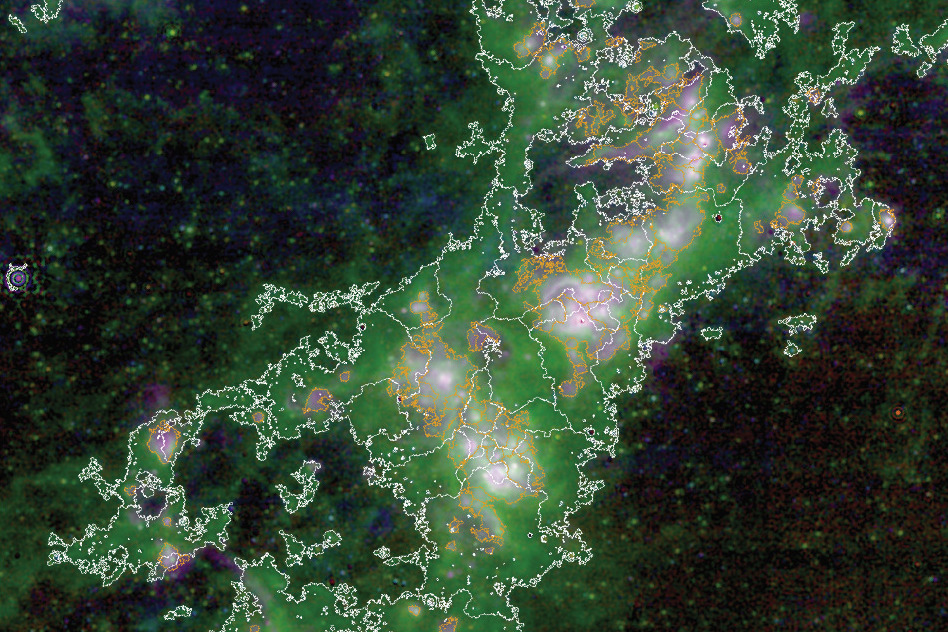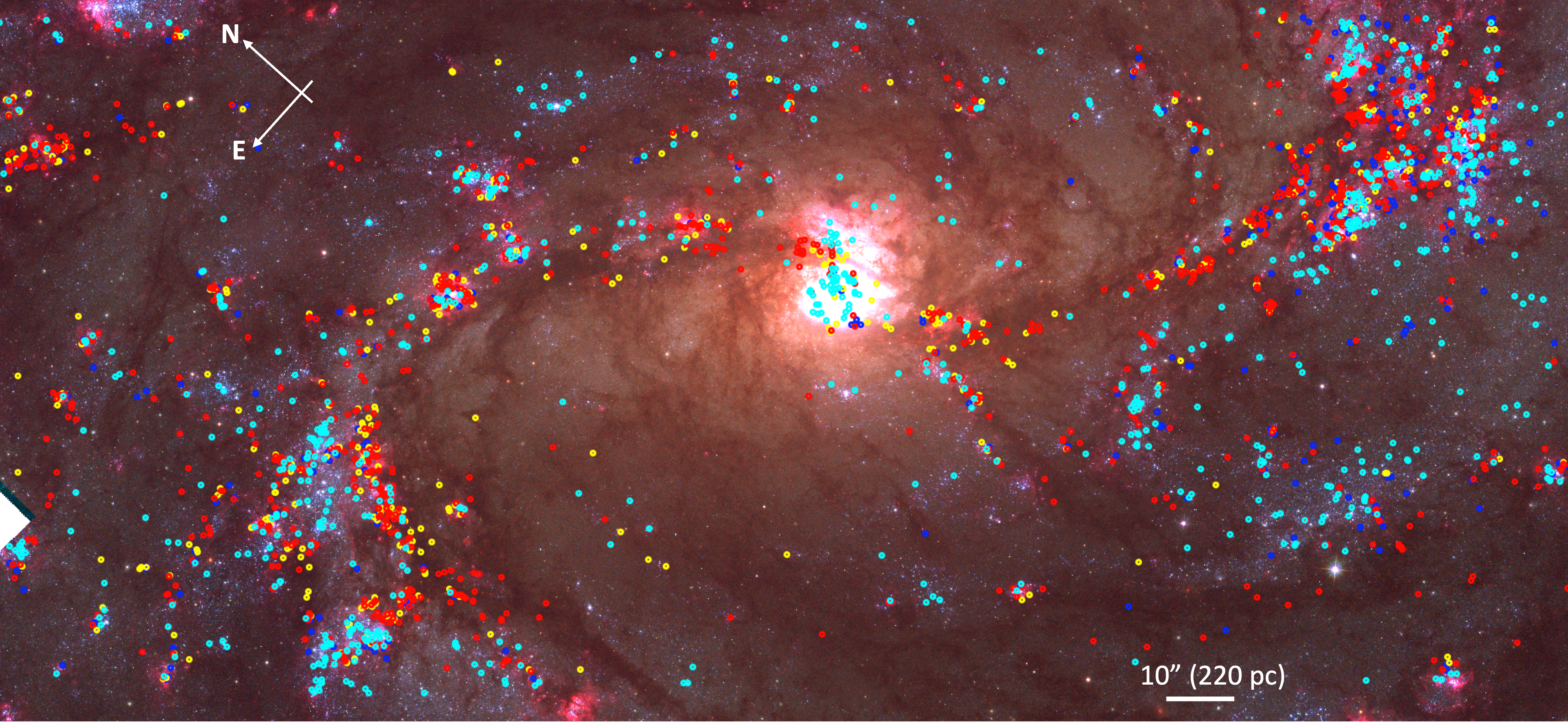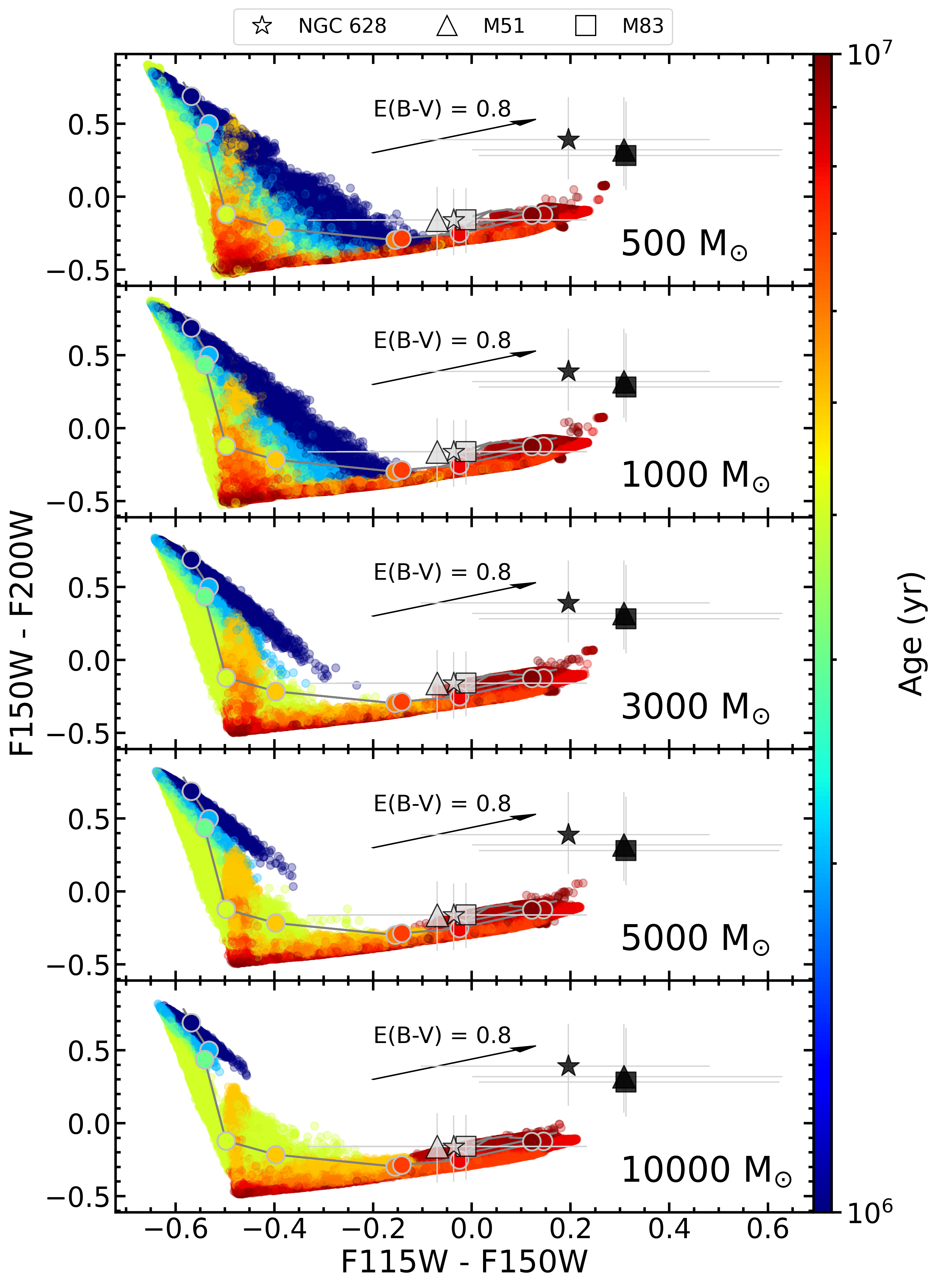The FEAST Program
My research is embedded within the FEAST project, a James Webb Space Telescope Cycle 1 program (PI Angela Adamo) that aims to understand how stellar feedback from massive stars shapes the surrounding interstellar medium and influences galaxy evolution. To achieve this, we have observed six galaxies within 10 Mpc: the well-studied M51, M83, NGC 628, NGC 4449, NGC 4490, and NGC 4495. These galaxies feature rich catalogs of archival observations collected from the largest ground- and space-based telescopes. In my research, I focus on the morphological and physical characterization of star-forming regions and emerging young star clusters in these galaxies, seeking to uncover the emergence phase of star formation and its impact across galactic scales.
Mapping HII Regions and PDRs

With the James Webb Space Telescope, we can now identify HII regions and photodissociation regions (PDRs) at resolutions of just a few parsecs in nearby galaxies. These regions are direct products of stellar feedback from emerging young star clusters. In the near-infrared, HII regions are traced by hydrogen recombination lines (e.g., Paα at 1.87 μm). PDRs are colder and denser, where molecules such as polycyclic aromatic hydrocarbons (PAHs) can survive; these are observable at 3.3 μm with JWST/NIRCam and 7.7μm with JWST/MIRI. I have developed a methodology to identify these regions and studied how PAHs are destroyed in intense stellar environments. You can find the corresponding paper here, where I am the corresponding author. The figure, taken from this paper, shows a star-forming complex with HII regions marked by orange contours and PDRs in white.
Identification of emerging young star clusters

Within the FEAST team, we have developed a pipeline to identify and extract emerging young star clusters across our sample of galaxies. These clusters are selected to be bright and compact in Paα and in the 3.3 μm PAH emission, and are classified as eYSCI. Sources that show bright and compact Paα emission but lack a compact PAH counterpart are classified as eYSCII. In FEAST, we are also studying a particular group of sources that display compact PAH emission without a corresponding Paα detection. The identification process is followed by multiple visual inspections, which ultimately result in the production of various catalogs. I am an active member of the catalog production effort for the FEAST team. In the figure, we show the young cluster population in M83 from the paper led by Alice Knutas and Angela Adamo, for which I am the third author. Here, we additionally show in cyan the population of optical young star clusters, identified using archival images from the Hubble Space Telescope.
Spectral Energy Distribution Modelling

The Hubble Space Telescope and the James Webb Space Telescope open a window onto emerging young star clusters, capturing their light across a wide range of wavelengths — from 0.3 to 5 μm. By analyzing this light with Spectral Energy Distribution (SED) fitting, we can uncover key properties of the clusters, such as their ages, masses, and how much dust obscures them. In my PhD, I use the SED fitting code CIGALE to explore these questions. Yet, the near infrared SED of young star clusters remains poorly understood. A paper I led as corresponding author, now published to the Astrophysical Journal, tackles the challenges of interpreting this part of the spectrum. Specifically, we investigated how stochastic sampling of the initial mass function impacts the cluster SED. To do this, I create libraries of simulated clusters using SLUG (Stochastically Lighting Up Galaxies) and compare them with observations and results from the CIGALE fits. The figure below, taken from the submitted paper, shows how stochasticity affects the near infrared colors of young star clusters with different masses and ages.
